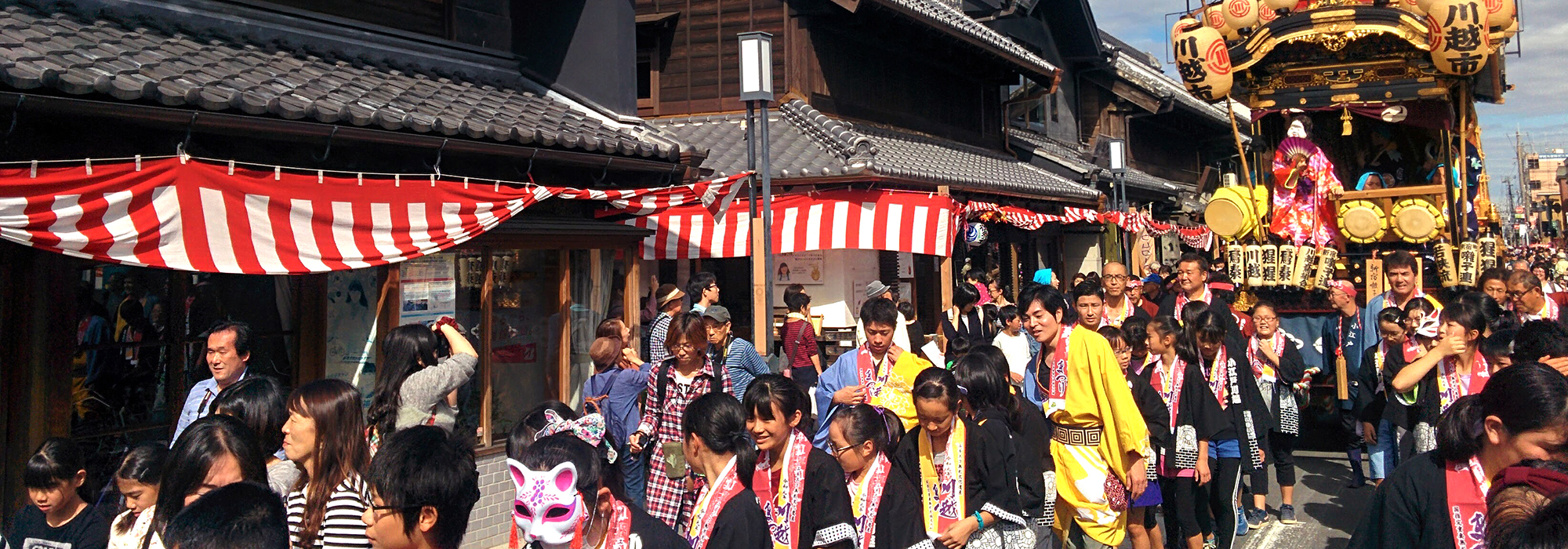
Inside the Kawagoe Festival
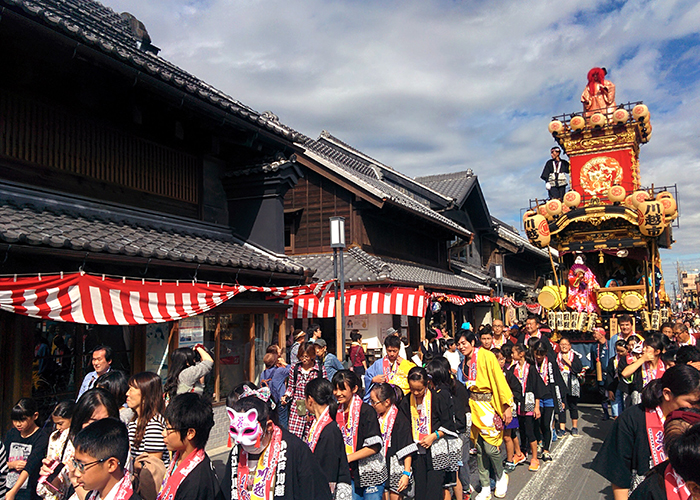
Inside the Kawagoe Festival
2019 Kawagoe Festival.
On Sunday October 20, the second and final day of the festival, we arrive to Kawagoe around 9 in the morning.
The only people in the streets at this time are festival stall owners bustling to get the food ready for the day.
We make our way to the Kawagoe City Hall where our adventure will begin.
from the Inside Dashi Pulling
Right in front of the City Hall is the Shojo dashi, the festival float owned by the city of Kawagoe.
Together with a group of children we are going to pull this dashi around town!
The doll on top of this dashi is the Shojo, a fictional creature from a Noh play that is famous for its love of sake
We all group together and each of us is given a hanten coat and a tenugui towel to wear.
They bear the writings “Kawagoe” and “Kawagoe Festival Reiwa Era first year”.
Then we are instructed on how dashi pulling works. Two long ropes are attached to the front of the float and they will be pulled by two rows of people. We have to pay attention to the signals of the sairyou, the supervisor in charge of moving the dashi.
He has two wooden sticks called hyoshigi that he claps together: two claps mean “go”; one clap means “stop”.
A lot of people are pulling the dashi so coordination is very important.
While the dashi is pulled everyone chants “Sore! Sore!” (pronounced “so-reh”).
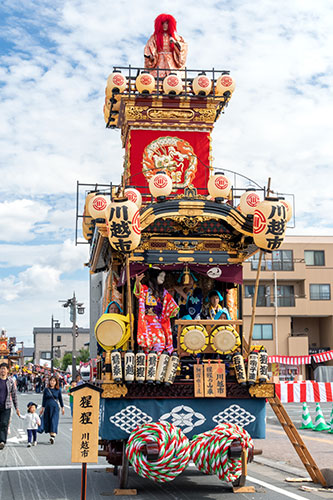

It’s a chant that’s traditionally made when a crowd moves heavy objects like lumber or rocks.
After that, two loud claps echo in the air and we start pulling.
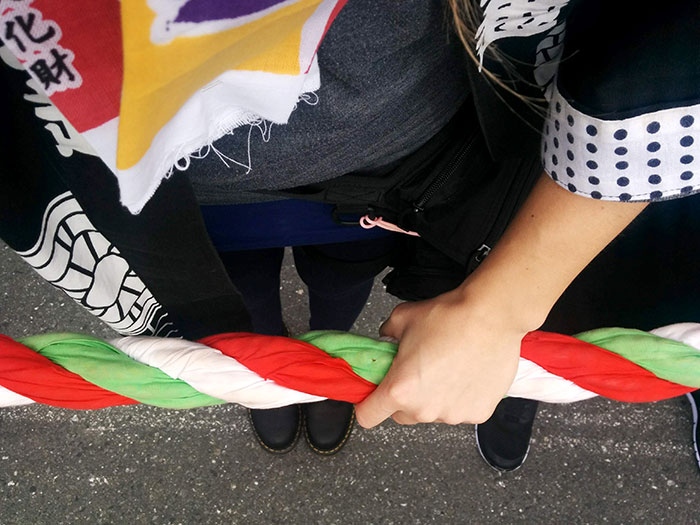
We start parading the dashi through the streets of Kawagoe. The children’s families and other onlookers walk alongside us.
People smile and wave at us from windows and balconies.
Every time we meet another dashi the sairyou signals us to stop to allow the musicians to pay respects to each other by performing the traditional hayashi music.
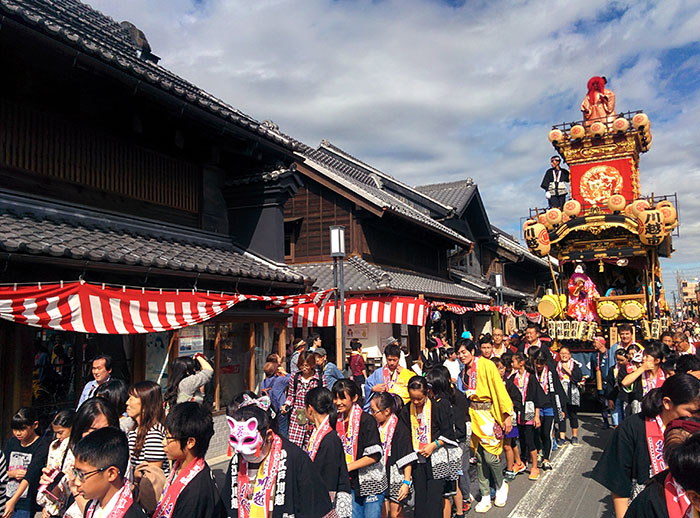
The hardest part is when the dashi has to turn, that’s when we have to pull the strongest!
After about an hour we return to the City Hall. My hands are a little sore but I’m all worked up from the experience.
There is still some time before the next event so we freely stroll around town. In the morning the festival is not too crowded.
The atmosphere is very relaxed and it’s easy to walk around. We run into some other dashi and are able to see them up close.
We also enjoy the hayashi music performances.
The most experienced members will perform at night so in this earlier part of the festival a lot of the hayashi performers are children.

Of the 29 existing floats, this year 18 participate in the festival
Before 1:30 p.m. we make our way to our spectator seats where we will watch the parade.
During the parade each dashi float takes the same route, and one by one they travel through the main roads of the central part of Kawagoe.
This is the best chance to take in all the floats from a comfortable position.
We can admire the outfits of each group, the different dolls and dashi styles.
The hayashi musicians also play different songs that we can take our time to enjoy.
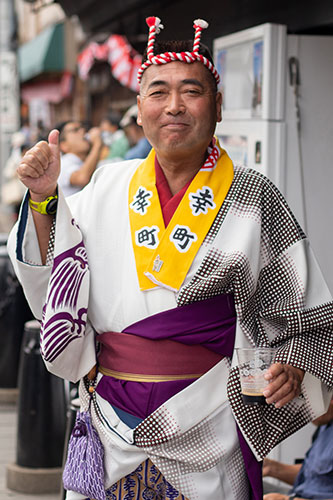



People are having fun no matter their age
Everyone is waiting for the highlight of the festival, the Hikkawase.
At 6:30 p.m. the dashi start roaming the streets, lit by paper lanterns, each taking a different route.
When two or more meet, they use their rotating stage to turn around and face each other in a lively and friendly “music battle”.
The hayashi performers are a lot more energetic during the Hikkawase.
On the ground, people holding lanterns cheer and cry out in an outburst of energy.
We can’t but stare in awe at this amazing display.
The festival continues until 9 p.m. At around 8 we decide to make our way back to the station, with the sounds of the celebrations still in our ears and an amazing experience in our hearts.
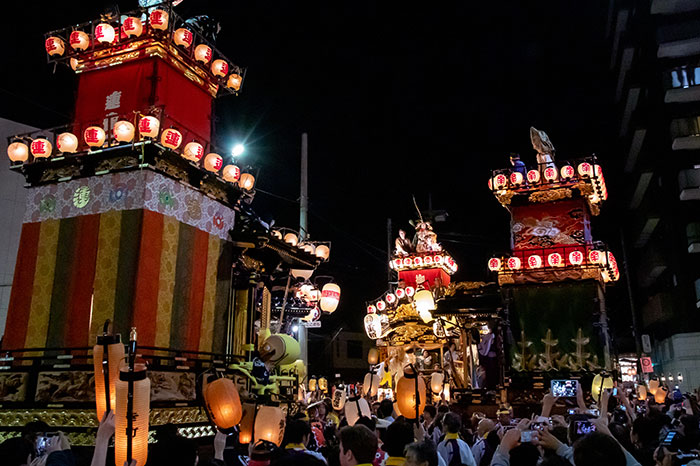
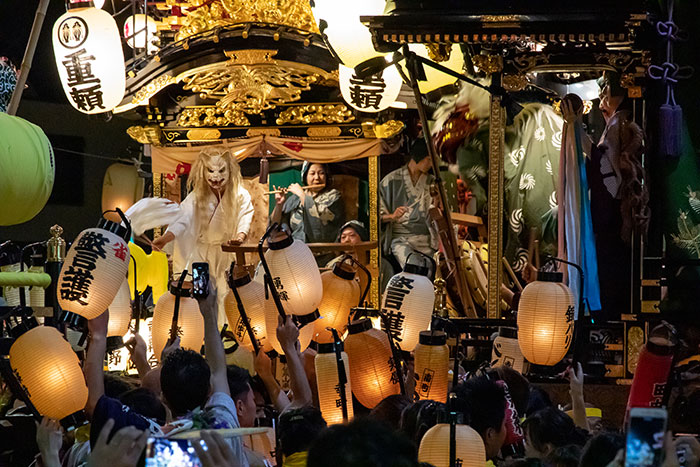


Four different floats meet and perform the hayashi
at Kawagoe Festival
A lot of shops and restaurants from Kawagoe and Saitama offer special treats only available during the festival.
Over the duration of the event we have the chance to try some Kawagoe original snacks and drinks.
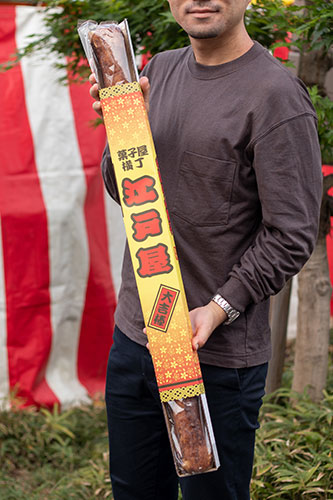
These baked strips of dough have a very light, flaky texture and are coated in brown sugar.
While they are an old-school treat in Japan, Kawagoe is famous for this oversized version. Great for sharing with friends.
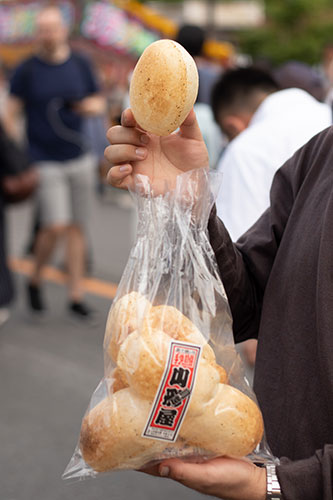
Senbei rice crackers are one of the most common snacks in Japan, however these particular treats are puffed like a ball.
Usually seasoned with soy sauce, they are pleasantly crunchy and hollow inside.
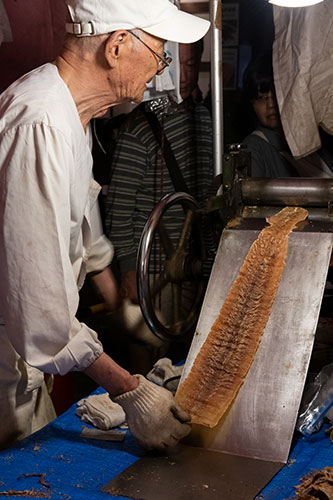
This unusual snack is a Kawagoe special.
When you approach this stall, you’ll see a man heat up dried squids on a charcoal brazier and press them with a roller until they become thin and very, very long!
Then he rolls them up and gives them to you. They’re slightly chewy and very tasty.
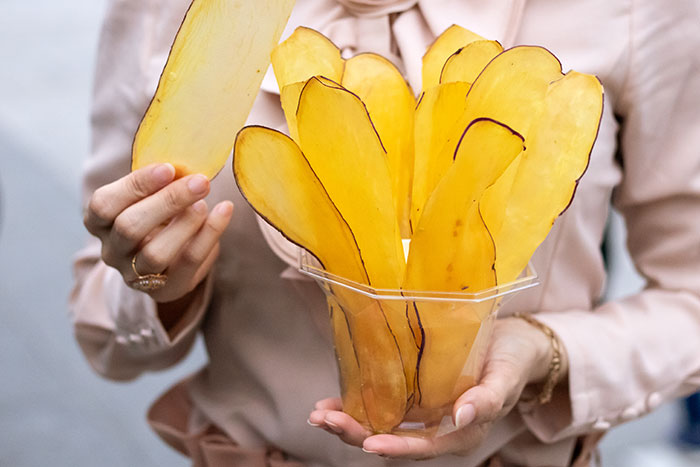
Kawagoe is famous for sweet potato. Here you’ll find countless sweets and snacks made with them.
One of the most popular is osatsu-chips, long slices of sweet potato made into crispy chips.
We enjoyed them with a heavenly butter dip.

We paired a cup with some fragrant Kawagoe dango topped with sweet potato paste
Coedo is a well-known craft beer in Japan and the Coedo Brewery is native to Kawagoe.
During the festival expect to see many stalls offering different varieties of the beer on tap!
The citrusy IPA Marihana, the clear Pilsner Ruri, the black lager Shikkoku are just some of the choices.
You’ll be sure to find a type that suits your palate.
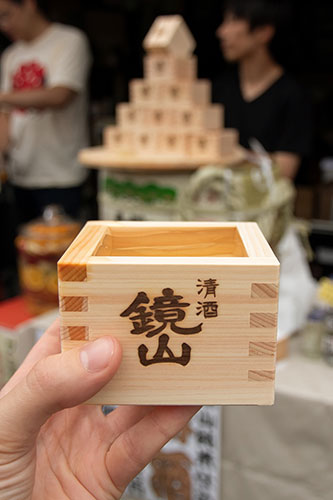
Sake drank from a masu has a pleasant woody aroma
Kawagoe isn’t just about beer. The local sake brewery Kagamiyama prepares special sake barrels that they open just for the festival.
This sake is not bottled and can only be enjoyed here. You can get it in a plastic cup or in a wooden masu (that you get to keep!).
I got to know what it feels like to be part of the event, laughing and sweating with everyone else.
Seeing young kids perform the hayashi and taking part in such an ancient tradition was touching.
This unique festival wasn’t like any other event that I have been to and I recommend it to anyone who wants to experience the Japanese culture in a deeper way.

 About/History
About/History